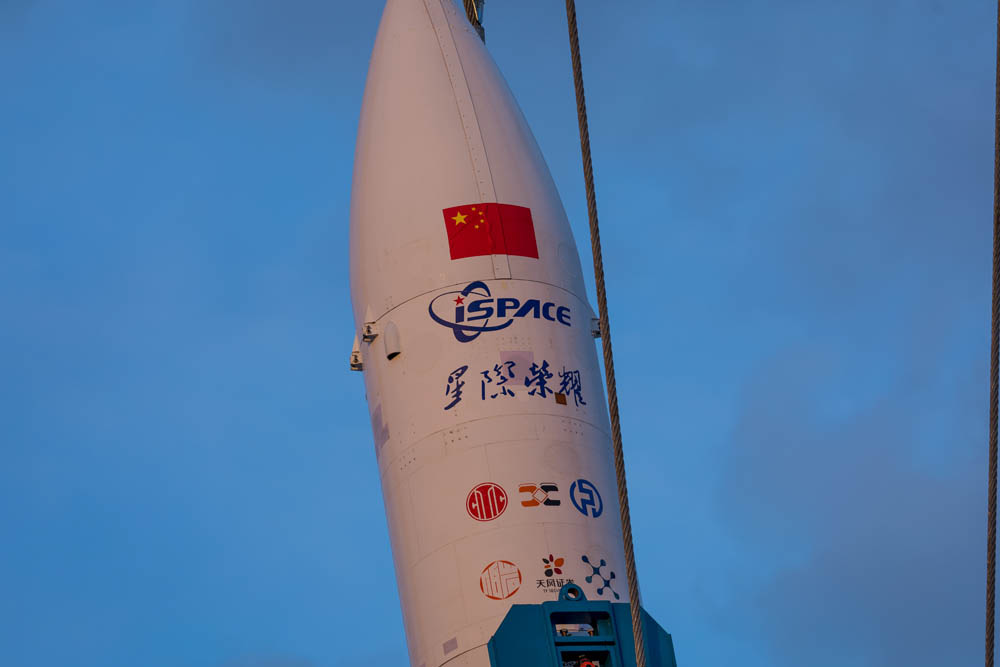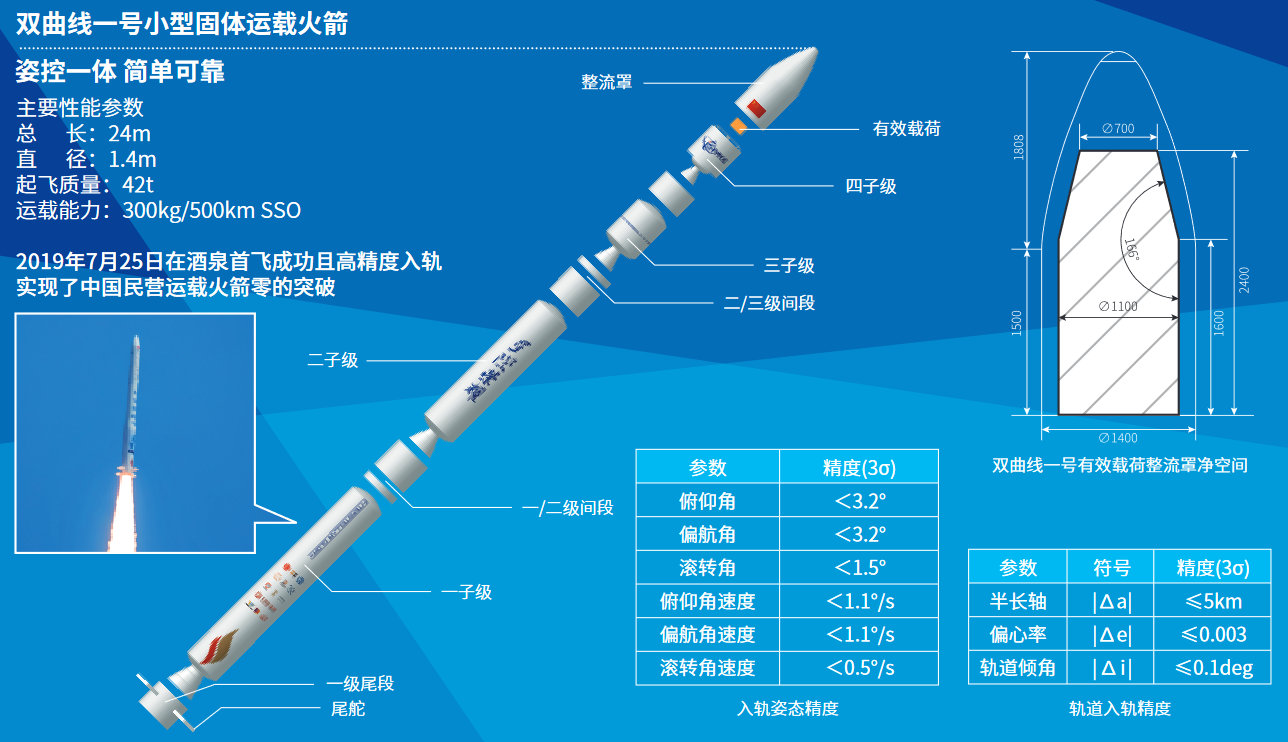Hyperbola-1 failure linked to stage separation issue
iSpace has completed the investigation into the failed Hyperbola-1 Y8 mission.

On July 11th, iSpace attempted to fly its seventh Hyperbola-1 vehicle, denoted as Y8, to low Earth orbit. Today, the company announced that it had completed the investigation into how the vehicle failed.
It is believed the failure was linked to an abnormal fourth-stage separation from the vehicle’s third-stage after it had completed its burn. While iSpace did not explicitly state the cause, it was likely a separation issue based on the fact that fourth-stage separation, structural loading, dynamic loading, and mechanical stress tests were performed and stated.
The full public statement, translated into English, on the investigation is as follows:
“On October 26, 2024, iSpace organized and held a review meeting on the investigation of flight faults of the Hyperbolic 1 Y8 launch vehicle in Beijing. Industry experts and higher-level management departments, satellite customers, investor representatives, insurance institutions, and major participating research participants All test units participated in this meeting. iSpace reported on the investigation work. After questioning and discussion, experts agreed that the problem was accurately located, the mechanism was clear, the fault had recurred, the improvement measures were verified to be effective, and after drawing inferences from one example, it could be reset.”
”After the flight failure of the Hyperbola-1 Y8 launch vehicle, iSpace immediately carried out analysis work in close coordination with relevant supporting and test units, and conducted rigorous analysis and careful investigation of the 52 minimum events resulting from the failure analysis. For stand-alone products, work such as stand-alone fault recurrence, mechanical environment investigation, mechanism quantitative analysis, and measure verification were carried out, and a total of 19 verification tests were completed. For the rocket system, we carried out system failure reproduction, mechanical environment analysis and verification, structural modal and dynamic analysis, system simulation verification, etc. We have carried out one four-stage modal test and three four-stage separation impact tests, and a total of four overall large-scale ground tests to ensure that the impact of the change measures has been comprehensively analyzed and the tests have been adequately verified. In order to completely prevent the recurrence of related problems, iSpace conducted a review of the mechanical environment adaptability of the rocket, and carried out 64 special reviews on the mechanical environment conditions, testing and validation of each single machine and sub-systems, and made timely additions and improvements to the deficiencies found and verified the tests.”
”During the investigation work, iSpace organized and carried out a series of “ensure success and promote development” work within the group to ensure the reliable quality of the whole process of aerospace model development. “Based on the full implementation of fault improvement measures, iSpace is now working on the development of the Hyperbola-1 Y10 launch vehicle and will continue to ensure the success of the Hyperbola-1 Y10's flight resumption with a strict, prudent and pragmatic working attitude.”
“Thank you to all parties for their support, attention and understanding of iSpace during the investigation process. The failure of this flight cost us dearly. In the future, iSpace will pay more attention to technical details, enhance quality awareness, strengthen quality control, and ensure the success of subsequent flight missions!”
If there are any problems with this translation please reach out and correct me.
As mentioned by the company in its statement, a return-to-flight mission is planned with the Hyperbola-1 Y10 vehicle for the rocket’s eighth flight. It is currently rumored that this mission will target a launch before the end of the year.
Hyperbola-1’s current flight record has had seven launches occur with four failures. The three previous failures were linked to thermal insulation foam falling onto one of the four grid fins, for Y2, the fairing failing to separate properly, for Y5, and an attitude control thruster’s valve becoming stuck open, for Y4.
iSpace does eventually plan to phase out Hyperbola-1 with its Hyperbola-3 launch vehicle, which will carry up to 13,600 kilograms into orbit. This past year has seen good progress towards a first launch and booster recovery. The first flight of Hyperbola-3 is currently expected in 2025.
Chinese companies, state-owned and private, use Y followed by a number to serialize launch mission numbering, similar to NASA with STS.
Check out the Hyperbola-1 Y8 launch
What is Hyperbola-1?
This section is for those less familiar with China's commercial launch vehicles.
Hyperbola-1 was the first privately funded launch vehicle to reach orbit from China and was developed by iSpace. The vehicle utilizes a four-stage design and burns solid propellant in all of the stages to achieve orbit.
The payload capacity of the launch vehicle is currently as follows:
520 kilograms to low Earth orbit
300 kilograms to a 500-kilometer sun-synchronous orbit

All four stages burn an unspecified solid propellant, the first-stage generates 79 tons of thrust, the second-stage generates 61 tons of thrust, the third-stage generates 20 tons of thrust, and the fourth-stage generates 6 tons of thrust.
On the launch pad, Hyperbola-1 is 24 meters tall and weighs 42,000 kilograms when prepped for launch. All four of the stages and fairing have a diameter of 1.4 meters, four grid fins are also present at the base of the first-stage to guide the vehicle during flight in the thicker parts of the atmosphere.
So far Hyperbola-1 has only flown from the Jiuquan Satellite Launch Center, in the west of the Inner Mongolia Autonomous Region and the north of Gansu province.




![Tyranny of the solid rocket motors? [Hyperbola-1 Y8]](https://substackcdn.com/image/fetch/w_1300,h_650,c_fill,f_auto,q_auto:good,fl_progressive:steep,g_auto/https%3A%2F%2Fsubstack-post-media.s3.amazonaws.com%2Fpublic%2Fimages%2F9b836d19-00cd-4af1-baa3-a5a5918516b1_1000x667.jpeg)